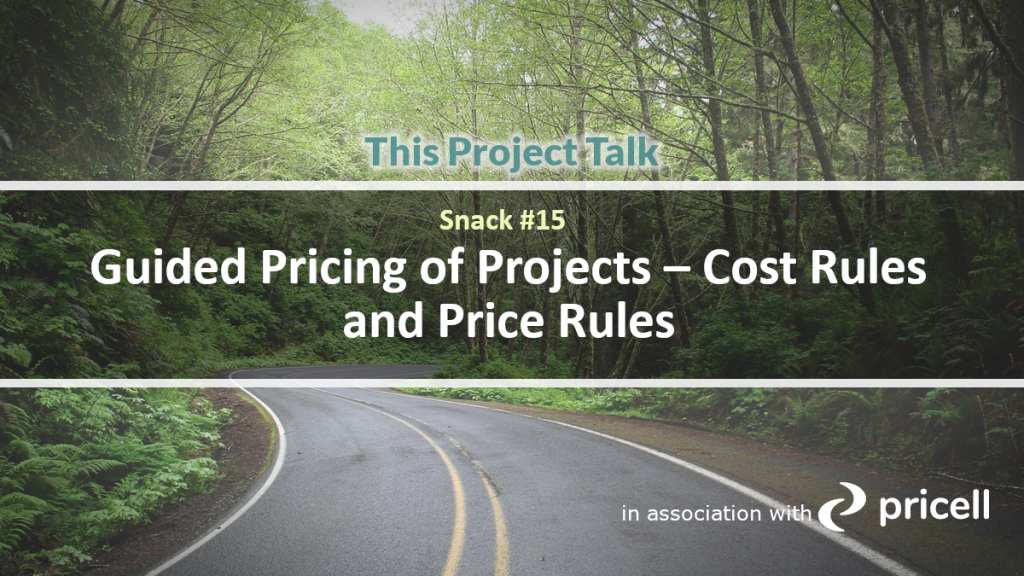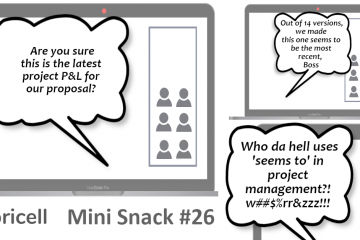
What is Guided Pricing?
If You are a company living out of professional services business and specifically on delivering projects to your customers, this is exactly what we will be talking about.
It does not mean the rules do not apply to other business models and industries.
Oh Yes, they do apply, and I think other businesses adopted the concept much earlier than professional services.
Why? We will talk about this later.
If your business is not a professional services / consulting company.
Do not run away - some concepts may be helpful to You as well!
Now let us come back to our question.
It is simply company approved method to build up the pricing of the projects.
Let us experiment.
If You will put 10 presale experts or project managers (whoever is preparing estimates and pricing) who never met and ask them to prepare the project cost and price based on the same estimate.
I can guarantee they will come up with different cost numbers and price numbers for the same estimate.
Why? Because each of them will use a different approach. Funny enough each of them will be right according to the rules they used.
"If You will put 10 project experts (whoever is preparing estimates and pricing) who never met and ask them to prepare the project cost and price based on the same estimate.
Guaranteed they will come up with different cost numbers and price numbers for the same estimate."
In a company that prepares hundreds of pricings offers for projects yearly, this scenario is a nightmare.
This is where guided pricing is needed. So, all use the same approach.
I am not saying companies have different approached as people educate themselves each other, but I can bet in any organization w/o guided pricing there will be a different approach.
And this has its cost. Sometimes quite huge.
However often the problem is not that visible, and the reality is that within-group who supports project pricing for the specific customer, pricing is done in a similar method. This is true.
But if You look at another customer presale supporting group, pricing may be done differently.
On the company scale, the problem is there.
Simply if You have to use risk buffer on project execution (and it is most certainly some of it will be used) your overall profit will decrease.
Cost Rules
The first part is Cost Rules.
This one is almost obvious and easy to approach.
The rules may include:
- Do we use the same cost rates for the same resource and roles?
- Do we use the same FX rate for other currency cost rates?
- How we calculate expenses?
- How we calculate no of hotel nights for an outplaced consultant?
- How do we count traveling time?
- What is our working week?
- How we calculate risk buffer?
- Do we use man-hours to calculate risk buffer or a lump sum?
There are more areas where the same approach leads to consistency and accurate cost calculation.
Price Rules
Price rules are a bit more complex. Why?
Because there is a part that can be defined as rules but there is a part where a person who decides on price should have the freedom to define.
As long as the final price is approved this is fine.
Many project and service deals require quite a unique approach. And the price may not be cost-based.
If the price is value-driven it is even more welcome.
But let us focus on parts that can be somehow defined.
- Do I use the proper rate card for the customer?
- What is minimal marge company can accept for this customer?
- Do I put marge on expenses in Time and Material deals?
- Do I put marge on risk buffer?
- Do I use negotiation uplift on the final price?
- What is a level of discount I can go ad who needs to approve it?
As we see price rules also cover marge rules for the deal.
Even price is developed as value-based, the company wants to have the same rules to be followed.
It wants to understand how value-based price converts into what project marge.
It must be monitored on delivery later.
Consequences of No Rules
The taste of consequences of no rules we could feel with 10 consultant’s examples from the first chapter. It leads to inconsistencies and guaranteed errors.
Let us some more obvious consequences of lacking guided pricing.
- Different methods of coming to cost and the price will lead to errors in calculations.
- It is the loss in $
- Different methods without errors will still are a high potential for lower marge, or higher price to keep marge for the same delivery. Is this a problem? Yes, as the higher price will need to be sold.
- It is the loss in man/hours and $.
- Longer time-to-market for preparing pricing– if the rules are clear person preparing the pricing does not lose time to come up with their method.
- It is the loss in man/hours.
- Longer time-to-market for validating pricing – if the manager must approve pricing made with an inconsistent method it takes longer to validate what approach has been used.
- It is the loss in man/hours.
- Longer time to educate a newly hired person on the job.
- It is the loss in man/hours.
- No consistent approach in project pricing makes it more difficult to develop a more informed discount strategy for this customer.
- It is the loss in $
Final Conclusion
Guided pricing is necessary for companies.
Bigger they are and more distributed (many geo divisions) more they need one approach.
At least for the cost side.
It is part of operational excellence.
This can be archived in multiple ways.
Of course, nailing some governance documents or training on rules is a great approach.
Now it only must be executed and followed.
However, a much better and effective way is to use a pricing platform, like pricell.io.
It has many rules which can be defined by the company and there is no way for a user to go a different approach, other than just follow.



